LAGERSTROEMIA
Lagerstroemia
L., Syst. Natl. ed. 10 (2): 1076. 1759; Roxb, Fl. Ind. (ed Carey.) 2: 503. 1832; Clarke in Hook. f., Fl. Brit. Ind. 2: 575. 1879; Brandis, Ind. Trees. 377. 1911; Bailey, Stand. Cycl. Hort. 4: 1775. 1919; Parker, For. Fl. Punj. ed. 1: 254. 1918 (Reprint 1973); ed. 3. 255.1956; Quin & Graham, Fl. China @ eFloras.org 13: 277; Fl. Pak. @ eFloras org p.2; Fatioa DC., Prod. 3: 88. 1828; Munchausia L., Mant. 2: 153. 1771.
Deciduous trees or shrubs, glabrous to tomentose. Young branches 4-angled.Leaves opposite, subopposite or alternate, sessile or petiolate; stipules minute, caducous. Inflorescence terminal or axillary paniculate cymes. Flowers bisexual, actinomorphic, 6- merous (occasionally 5- or 7-merous), usually showy. Calyx-tube (Hypanthium) campanulate or infundibuliform, coriaceous, smooth, ribbed or winged; lobes usually 6, ovate or triangular, often caudate, valvate. Petals usually 6, rose, purple to white, inserted between the calyx lobes, clawed, limb more or less orbicular, wrinkled, the margin crisped. Stamens many, inserted near the bottom of calyx tube, much exserted, dimorphic in most species, 6 solitary in front of sepals with thick and longer filaments and large anthers, 12-100+ in clusters in front of petals with thin and relatively short filaments and small anthers; or monomorphic, with filaments thin and subequal. Ovary globose to oblong, 3-6-locular, sessile at the bottom of calyx tube, ovules many, placentation axile; style long-exserted, bent; stigma capitate. Capsule dry, indurate, surrounded at base by persistent calyx, loculicidally dehiscent, 3-6 valved. Seeds numerous, compressed, winged at the top.
48 species
Lagerstroemia indica
Lagerstroemia indica
L., Syst. Natl. ed. 10 (2): 1076. 1759; Roxb, Fl. Ind. (ed Carey.) 2: 505. 1832; C. B. Clarke in Hook. f., Fl. Brit. Ind. 2: 575. 1879; Brandis, Ind. Trees. 378. 1911; Bamber, Pl. Punj. 53. 1916; Bailey, Stand. Cycl. Hort. 4: 1775. 1919; Parker, For. Fl. Punj. ed. 1. 255. 1918 (Reprint 1973); Furtado & Montien, Gard. Bull. Singapore 24: 190. 1969; Fl. China @ eFloras.org 13: 279; Fl. Pak. @ eFloras org p.2.
Shrubs or small trees up to 7 m tall; bark smooth, pinkish-gray and mottled, shedding each year. Branchlets slender, 4-angled or subalate, puberulous. Leaves simple, opposite or subopposite; sessile or with short petioles to 2 mm; leaf-blade elliptic, oblong, obovate or suborbicular, 2.5-7 cm x 1.5-3.5 cm, papery to slightly leathery, glabrous or pubescent on veins abaxially, lateral veins 3-7 pairs; base broadly cuneate to rounded, apex acute, retuse or obtuse with small mucro, margin entire. Flowers bisexual, actinomorphic, 6-merous, large, ca. 5 cm across, white to rose or purple in subpyramidal panicles, 6-15 cm long, puberulous. Epicalyx absent. Calyx tube (Hypanthium) 6 mm x 8 mm, smooth, not ribbed, glabrous; lobes 6, 4-5 mm x 3-3.5 mm, triangular, valvate, adaxially glabrous. Petals 6, inserted at hypanthium rim in between calyx lobes, claws 1-1.4 cm, limb 1.5-2.3 cm long and nearly as much broad, orbicular, wrinkled, margin crispate, white to rose to purple. Stamens inserted at the base of hypanthium, dimorphic; central 25-40+ stamens normal, filaments ca. 1.4 cm long, white straight; anthers 1 mm x 1 mm, ovoid; 6 large stamens, one each opposite to calyx lobe, peripheral to normal stamens, filaments 2+ cm long, bent at apex inwards; anthers 1.5 mm x 1 mm, yellow brown, ovoid- oblong. Ovary ca. 2 mm long, glabrous, multilocular, ovules many, placentation axile; style ca. 1.7 mm long; stigma capitate. Capsule ellipsoidal, 1-1.3 cm x 0.7-1.2 cm, 4-6 valved. Seeds including wing ca. 8 mm long.
Common Names: Common Crape Myrtle, Crape Myrtle, Crepe Flower, Crepe Myrtle; Saona, Sawani, Farash (Hindi)
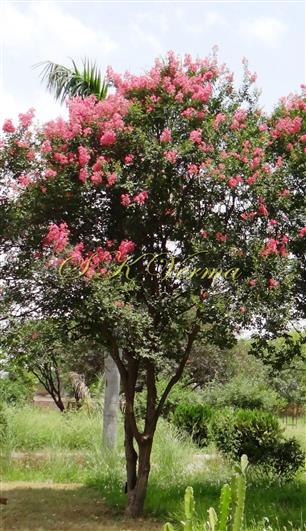
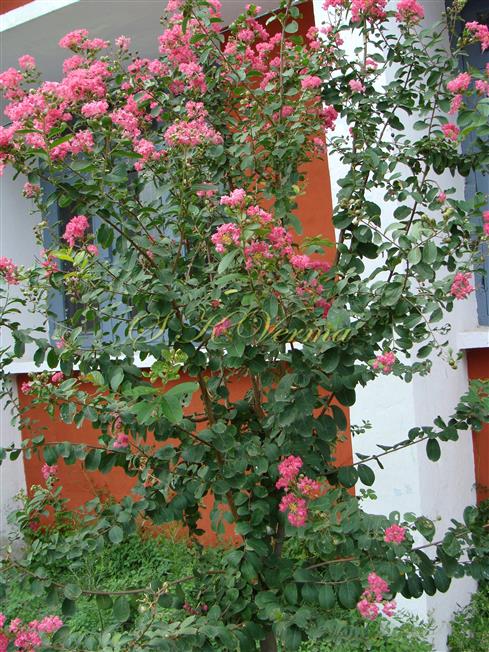
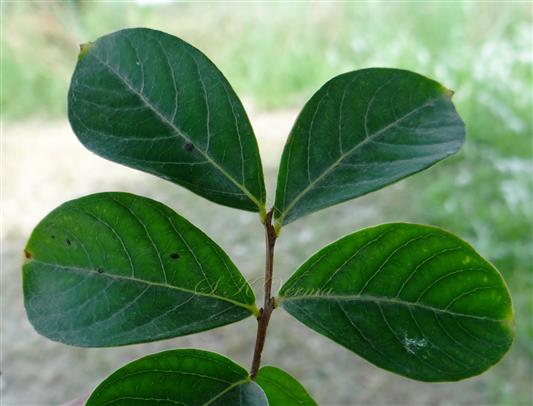
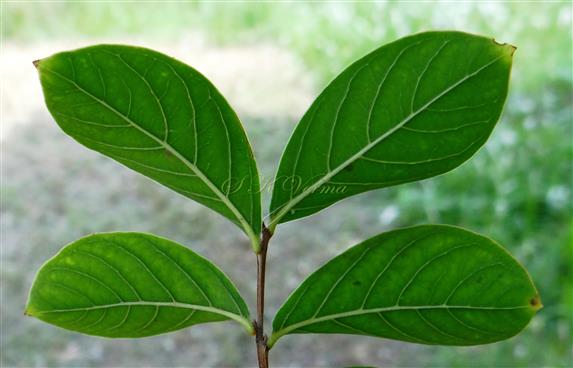
-DSC09857.jpg)
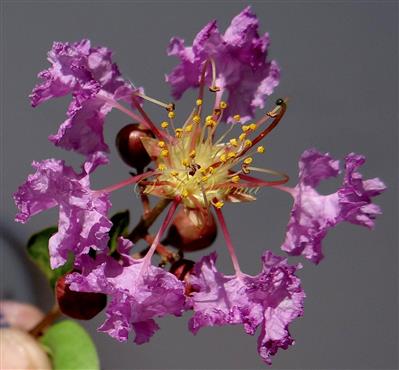
-DSC06227.jpg)
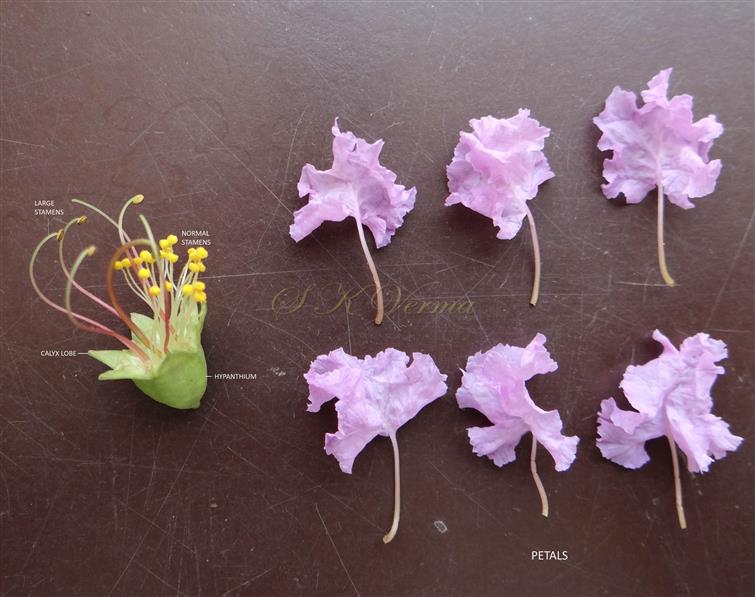
.jpg)
.jpg)


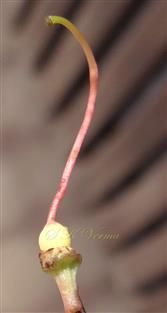

-DSC08307.jpg)
-DSC09853.jpg)





-DSC09857.jpg)

-DSC06227.jpg)

.jpg)
.jpg)
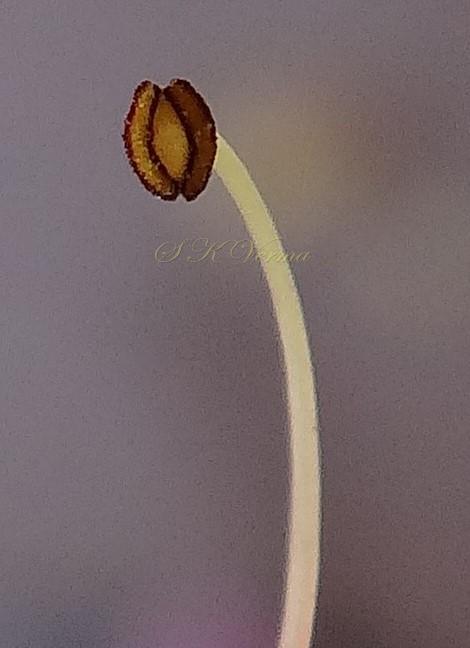
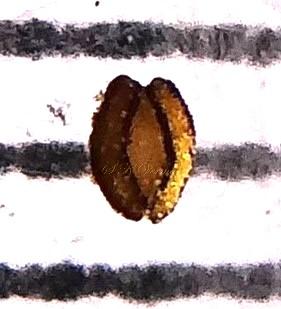

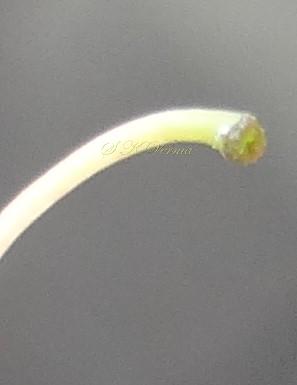
-DSC08307.jpg)
-DSC09853.jpg)